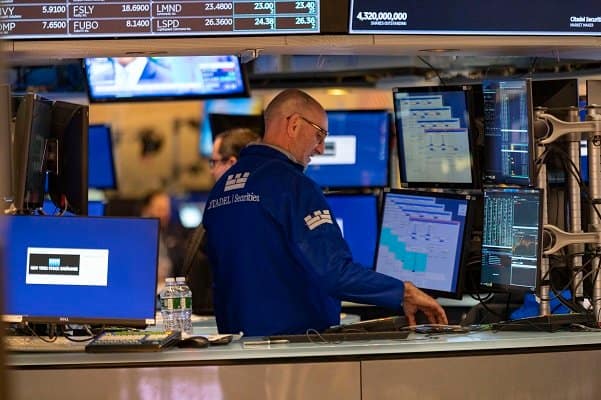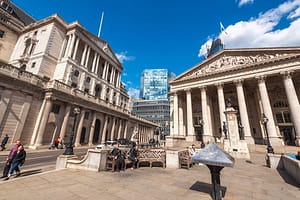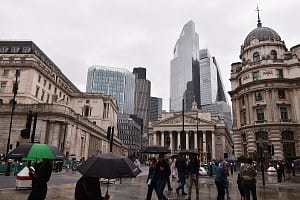In the United States, the stock market presented a mixed landscape last week, marked by a divergence in performance across different sectors.
Despite some companies reporting better-than-expected earnings, the overall sentiment was dampened by discouraging inflation figures.
This led to the S&P 500 Index registering its first weekly decline since the year’s commencement, primarily affected by a dip in large-cap growth stocks.
Contrarily, small-cap stocks, represented by the Russell 2000 Index, demonstrated resilience and outperformed, notably rebounding after a significant drop. The market saw an uptick in trading volumes towards the latter part of the week, influenced by various global holidays and events that had initially led to a quieter start.
Investors were particularly attuned to inflation indicators, with reports showing consumer prices rising slightly above expectations.
This uptick in inflation, especially the core consumer prices, remains a concern as it hovers near double the Federal Reserve’s target, prompting market volatility. Remarks from Chicago Fed President Austan Goolsbee attempted to mitigate concerns by suggesting that the current inflation trajectory could still align with the Fed’s goals, albeit acknowledging the unpredictable nature of shelter costs.
Despite these reassurances, additional inflation surprises, particularly in producer prices, added to the cautious market stance.
On the retail front, a notable decline in sales was observed, although certain sectors like restaurants and bars saw unexpected growth. This mixed economic data, coupled with lower-than-anticipated housing starts, contributed to a reassessment of potential Federal Reserve rate cuts, with the market significantly dialing back expectations.
Transitioning to Europe, the market atmosphere was cautiously optimistic, buoyed by a semblance of cooling inflation and a more favorable perspective on potential interest rate adjustments. The pan-European STOXX Europe 600 Index saw an uplift, supported by positive corporate earnings across major economies like Germany, France, Italy, and the UK. However, this optimism was tempered by the European Central Bank’s (ECB) cautious stance on policy easing, amidst fears of a potential inflation rebound.
The UK’s economic landscape was particularly notable, with the country entering a recession in the final quarter of the previous year, even as inflation rates remained steady.
This economic contraction, coupled with stable but high inflation figures, has reignited discussions about the possibility of the Bank of England (BoE) reducing interest rates in the near term. Despite a slight deceleration in wage growth, the BoE Governor emphasized the need for clearer signs of a slowdown in wage increases to combat persistent services inflation.
Moreover, the European Commission’s revised economic growth forecasts for the eurozone highlighted ongoing challenges, including the impact of inflation on consumer purchasing power and the dampening effect of higher interest rates on credit. The stagnation of the eurozone’s economy in the last quarter further underscores the region’s delicate economic balance as it navigates through inflationary pressures and growth concerns.
In other global markets, Japan’s equity market experienced positive momentum, with significant gains in major indexes. This optimism was fueled by a weakening yen and encouraging corporate earnings, despite concerns over Japan’s economic growth trajectory. The Bank of Japan’s monetary policy remains a focal point, with its future direction hinged on achieving a sustainable inflation target.
However, Japan’s economy faced setbacks, slipping into a technical recession due to a contraction in domestic demand, despite some support from export growth. This downturn led to Japan falling behind Germany in terms of gross domestic product, marking a significant shift in the global economic landscape. The weak yen, while beneficial for exporters, has prompted government officials to closely monitor the currency, though without indicating immediate intervention.
China’s market was inactive due to the Lunar New Year holiday, yet early indications suggested a rebound in consumer spending during this critical festive period. Despite this positive sign, comparisons with the previous year’s pandemic-affected spending levels warrant caution.
The property sector crisis and deflationary concerns continue to loom over China’s economic recovery, making the resumption of stock market trading a closely watched event for insights into investor sentiment and economic direction.
Last week saw varied performances across global financial markets. In the United States, the stock market depicted a diverse picture, with investor sentiment impacted by concerning inflation data. European markets displayed cautious optimism amid economic challenges. Meanwhile, China’s market was inactive due to the Lunar New Year celebrations.






Leave a Comment